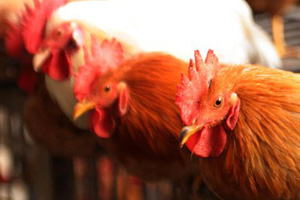Green eggs to tackle poultry welfare issue

The introduction of ‘Green eggs’ may improve animal welfare in layer hen operations, at least that is the hope of research being carried out at Charles Sturt University (CSU) in Australia.
“At the moment there’s no simple, cost effective way of determing the sex of a chick until it’s hatched so day-old male layer chicks are mass culled,” said Dr Nigel Urwin, a Senior Lecturer in Genetics at CSU.
Dr Urwin’s research, through CSU’s School of Animal and Veterinary Sciences and Graham Centre, aims to produce chickens that have been genetically modified with a green fluroescent protein that will allow the sex of the developing embryo to be determined inside the egg.
“This protein is originally found in jellyfish and glows green under ultraviolet light,” said Dr Urwin. “We’re trying to put that gene into chickens, specifically into one of the sex chromosomes, so for example only the skin of female chicks would glow under that light.”
Dr Urwin said determining the sex of the chick very early on in its development has benefits for animal welfare and the bottom line of the egg industry.
“The whole egg industry is automated and ideally for a sex determination method you need something that’s very quick, very cheap and can be done on a conveyor belt as you pass eggs into or out of an incubator,” he said.
“It takes 21 days for an egg to hatch and if you can avoid incubating eggs that have male chicks there’s potentially big savings for producers.”
Dr Urwin and PhD student Mr Emmanuel Quansah have already demonstrated that the green fluorescent protein is expressed in cells in culture. The next step is producing a genetically modified chicken with the gene. Quansah will spend the next six months at the Animal Biosciences and Biotechnology Lab of the United Stated Department of Agriculture (USDA) in Maryland USA. “The USDA has one of the best poultry research facilities in the world with expertise in artificial insemination,” said Quansah.
“I’ve created DNA constructs with the gene which produces the green fluorescent protein. That will be inserted into sperm collected from a rooster and we’ll artificially inseminate the hens. Hopefully some of the chicks will then have the gene in the sex chromosome.”
Dr Urwin concedes that even if the research is successful, industry adoption will depend upon public acceptance of genetically modified chickens.
“In this world nothing’s perfect and you’ve got to weigh up whether you prefer to destroy billions of male day-old chicks or to have a genetically modified line of chicken and be able to tell the sex early in development, thus solving the problem?” said Dr Urwin “I personally would prefer to eat the products of genetically modified chickens.”













